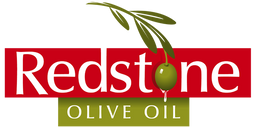Olive oil is one of the staples of many households around the world, popular not only for its high flavor but also for its great nutritional content. But alas, not all olive oils have the same quality. To make sure that you are getting the best, one must learn about how to choose pure olive oil. Read on to find out the main things that should be considered in choosing the right oleaginous liquid.

1. Look for the Label with Required Details
Just check the label of pure olive oil before opting for it. Check the words "extra virgin olive oil" that means that it comes from the first cold-pressing of the olives and is done without heating or chemicals. Another important detail is the harvest date for ensuring freshness, as the shelf life of the olive oil is up to 18-24 months after harvesting.
2. Look for the Packaging
High-quality olive oil is susceptible to light and heat, which can alter its flavour and nutritional value. Use dark glass bottles or tins to keep it from light. Avoid using transparent plastic bottles since they provide the least protection.
3. Know the Origin
There are areas associated with longer olive cultivation traditions, such as Italy, Spain, Greece, and California. A pure single-origin olive oil is one whose olives have originated from one region to ascertain flavor and quality homogeneity.
4. Check for Certification Seals
Authenticity is sometimes shown in the certifications, such as from the International Olive Council (IOC) or PDO (Protected Designation of Origin). Such organizations ensure that olive oil adheres to the high quality and production standards.
5. Taste It
If possible, taste the olive oil before buying. Quality olive oil should have a fresh, fruity aroma with a balance of bitterness and peppery notes, which are indicators of healthy antioxidants. Avoid oils that taste rancid, flat, or greasy.
6. Check the Price
Price, of course, does not always make it. Cheap olive oil might be low-quality or even adulterated. High-quality pure olive oil has to be carefully cultivated and processed, and it costs money.
Conclusion
Choosing high-quality pure olive oil requires more than just picking any bottle off a shelf. When checking the label, considering packaging, knowing origins, looking for certification seals, tasting, and keeping an eye on the price, you would ensure that the olive oil being selected is appropriate for health purposes and culinary consumption. These steps will help to make sure the ancient, nutritionally rich oil is enjoyed as intended.
Frequently Asked Questions (FAQs)
1. What is the difference between extra virgin olive oil and pure olive oil?
Extra virgin olive oil is the purest, from the first cold pressing of the olives, without chemicals and heat. Pure olive oil is a blend of refined olive oil and a few percent of extra virgin olive oil, which brings a lighter flavor and fewer health benefits.
2. How can I know that my olive oil has gone bad?
Bad olive oil will smell rancid, stale, or musty. Its taste may be flat, greasy, or even slightly sour. Always store olive oil in a cool, dark place to extend its shelf life.
3. Is it safe to cook with extra virgin olive oil?
Extra virgin olive oil is safe to cook with, since it has a mild smoke point (about 375°F or 190°C), making it acceptable for sautéing, roasting, and even baking. However, refined olive oil is recommended for high-heat cooking.
4. Does the color of olive oil indicate its quality?
No, colour is not one of the markers of quality, though olive oil can be varied in colour; it may even be green up to golden yellow, depending upon the variety and harvest time for the olives. Quality is better judged by the taste, the aroma, the freshness.
5. Can olive oil be put in the fridge to keep fresh?
Refrigerating olive oil can increase its shelf life, although it may get hazy or harden. This is typical and does not degrade the quality. Simply bring it to room temperature before using.






